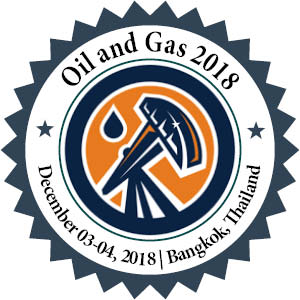
Dr. Yahui Zhang
Memorial University of Newfoundland, Canada
Title: Brine electrolysis process for enhanced oil recovery
Biography
Biography: Dr. Yahui Zhang
Abstract
Usually, 60% to 80% of crude oil remains in a reservoir after traditional primary and secondary recoveries. To extract the majority of original oil left, various enhanced oil recovery (EOR) technologies have been developed, which can be categorized into thermal recovery, gas injection, and chemical injection. To take advantages of the chemical properties of the oil reservoir system and combine the merits of developed EOR technologies, a novel brine electrolysis process for EOR is presented. The major products generated in brine electrolysis, i.e., NaOH, H2 gas and Cl2 gas, are all very effective for improving oil recovery due to their strong cleaning effects on oil reservoir. This brine electrolysis process combines the advantages of gas injection and chemical injection (alkali injection). Thermodynamically, a low applied potential, i.e., a potential over 1.36v (under standard conditions), can realize the electrolysis process. The characteristic of the brine electrolysis process is that the chemical properties of the reservoir brine and its electrolysis products are considered and fully employed. Compared with the highly effective alkaline (NaOH) flooding process, for the presented brine electrolysis process, the material for alkaline (NaOH) production is from the bine in the reservoir system. Thus, there are no costs for material and product transportation, and processes such as crystalizing, drying and packaging can be saved. It is more economical and effective than the alkali flooding process. The technological issues involved in this new process are easy to realize and environmentally feasible. It will be a highly effective and promising EOR technology.

